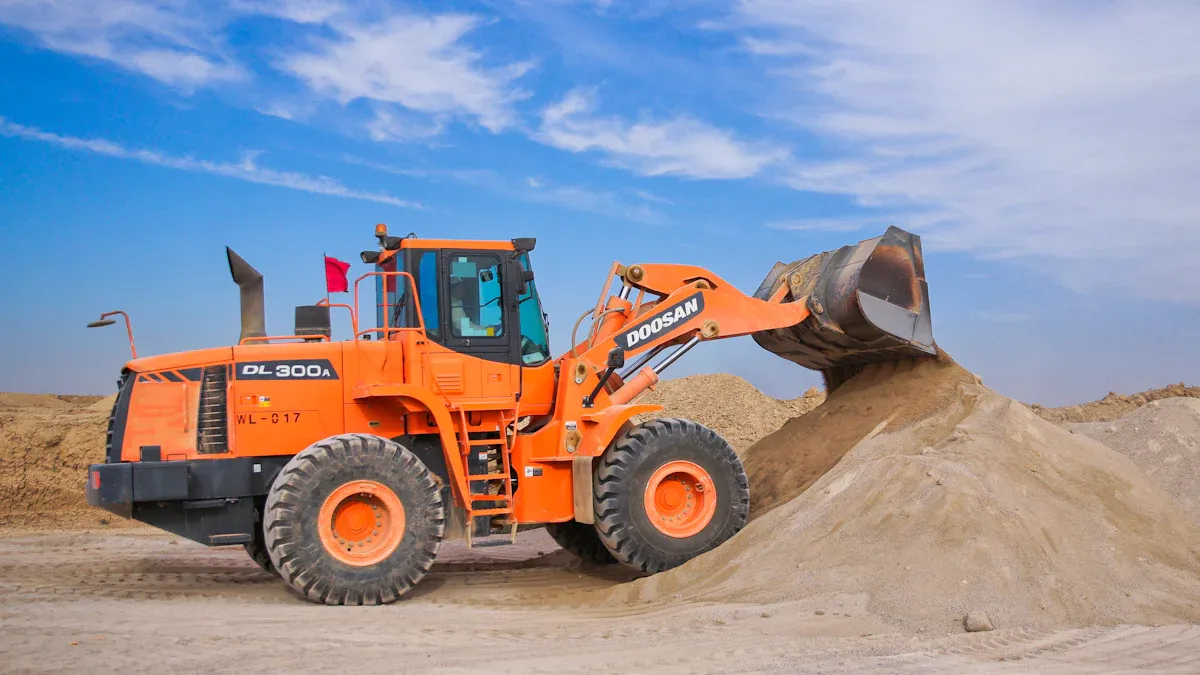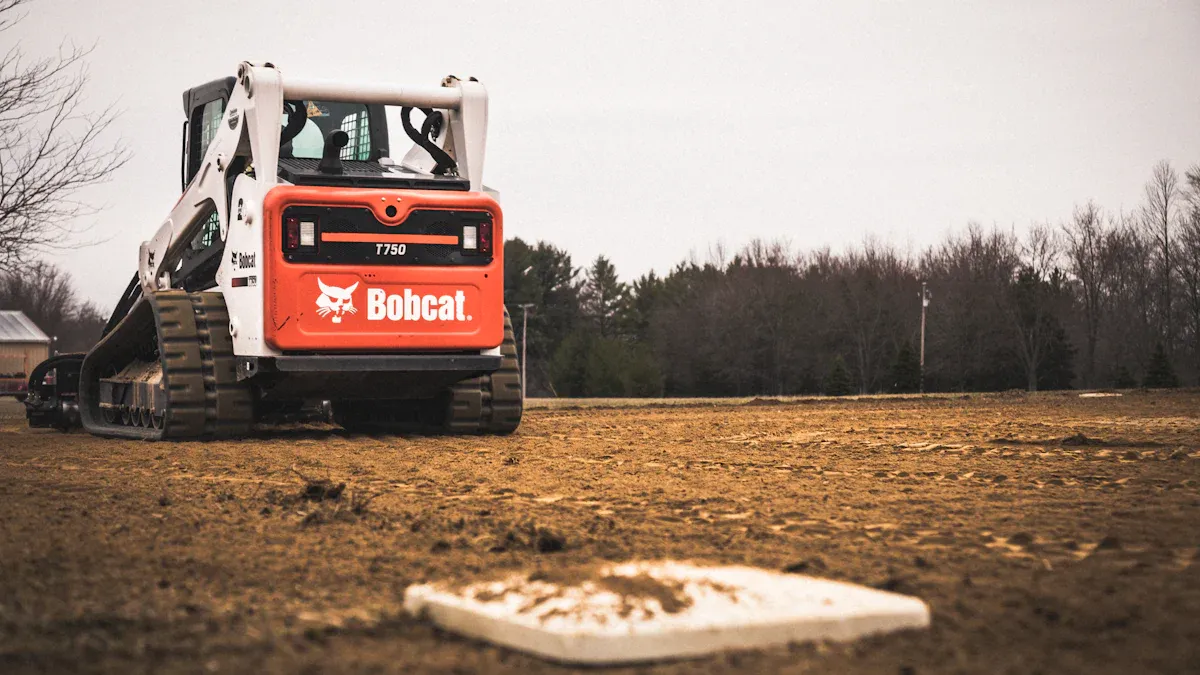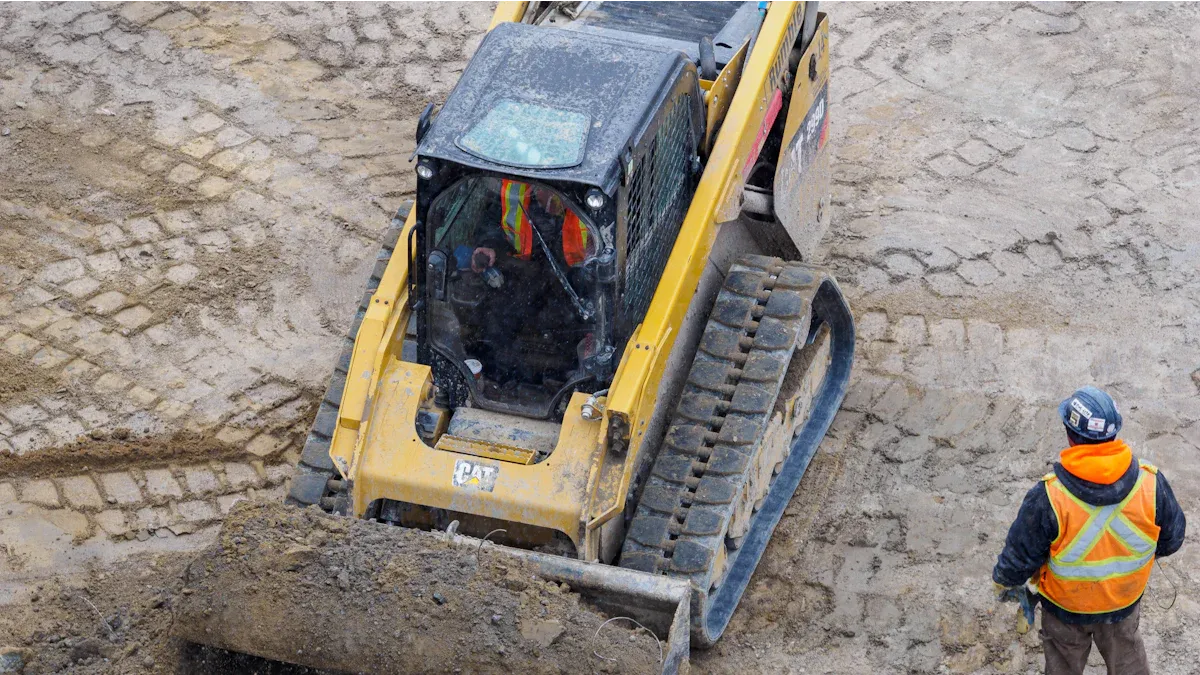
Many operators notice that rubber tracks for Track Loader help their machines last longer. These tracks cut down on wear, boost grip, and keep the ground smooth. People see better performance and durability after switching to rubber tracks. Upgrading makes work easier and helps protect valuable equipment.
Key Takeaways
- Rubber tracks protect the undercarriage by reducing wear and absorbing shocks, which helps extend the track loader’s lifespan and lowers repair costs.
- Regular cleaning, proper track tension, and timely inspections keep rubber tracks in good condition, preventing damage and ensuring smoother, safer operation.
- Choosing high-quality rubber tracks and training operators to avoid harsh driving habits improve performance, reduce downtime, and save money over time.
How Rubber Tracks for Track Loader Extend Lifespan

Reduced Wear and Tear on Undercarriage Components
Rubber tracks for Track Loader help protect the undercarriage from damage. Their softer material absorbs shocks and reduces the impact on rollers, idlers, and sprockets. This means fewer repairs and less downtime. Operators who clean the undercarriage and check track tension daily can see track life stretch from 2,000 up to 5,000 hours. Here are some ways rubber tracks reduce wear:
- They cushion the undercarriage, unlike steel tracks that can grind and cause more damage.
- Regular cleaning keeps mud and gravel from building up, which prevents extra wear.
- Daily inspections and proper tension help maintain track integrity.
- Operators who avoid sharp turns and spinning protect both the tracks and the machine.
Many industries, like construction and agriculture, have seen lower maintenance costs and longer machine life after switching to rubber tracks for Track Loader.
Improved Traction and Stability in Diverse Conditions
Rubber tracks for Track Loader give machines a strong grip on many surfaces. They adapt to uneven ground, mud, and even steep slopes. This means operators can work safely and efficiently, even in tough spots. Some field tests show that special tread patterns improve traction on wet or muddy ground. For example:
- Tracks with deeper treads hold better on soft soil and steep inclines.
- Wider footprints help machines float over mud instead of sinking.
- Advanced designs reduce vibration and keep the loader steady.
Operators notice that these tracks let them work in places where wheeled machines would get stuck. The added stability also means less risk of tipping and better control on slopes.
Minimized Ground Disturbance and Enhanced Efficiency
Rubber tracks spread the weight of the loader over a larger area. This lowers ground pressure by up to 75% compared to wheels. As a result, the tracks protect lawns, finished surfaces, and farmland from deep ruts and damage. Here’s a quick look at how rubber tracks boost efficiency:
| Benefit | How It Helps | Result |
|---|---|---|
| Lower Ground Pressure | Spreads weight, reduces soil compaction | Healthier soil, less repair |
| Superior Traction | Prevents slippage, works in wet/muddy areas | Fewer delays, more uptime |
| Enhanced Load Capacity | Carries heavy loads without sinking | Faster, safer material handling |
| Noise and Vibration Reduction | Quieter operation, less vibration | Better comfort, longer machine life |
Operators in landscaping and agriculture appreciate how these tracks let them work longer during wet seasons and avoid costly repairs to the ground. The tracks also help save fuel and reduce overall site costs.
Smoother Ride and Reduced Machine Vibration
Rubber tracks for Track Loader offer a smoother ride than steel tracks. They absorb shocks from bumps and rough terrain, which means less vibration for both the machine and the operator. This comfort matters during long workdays. Some loaders use anti-vibration systems with rubber isolators and special rollers to make the ride even smoother. Here’s what operators notice:
- Less vibration means less fatigue and more focus on the job.
- Smoother rides protect the loader’s parts from wear.
- Lower noise levels make work more pleasant, especially in neighborhoods or sensitive areas.
Industry experts say that reducing vibration not only helps the operator but also extends the life of the loader. Choosing rubber tracks for Track Loader is a smart way to keep both the machine and the operator in top shape.
Maximizing Track Loader Longevity with Rubber Tracks

Selecting High-Quality Rubber Tracks for Track Loader
Choosing the right rubber tracks for Track Loader makes a big difference in how long the machine lasts. Operators should look for tracks made from strong rubber compounds. These compounds, like synthetic blends, help the tracks stay flexible and resist wear. Tracks with steel cords or extra layers inside last longer and handle heavy loads better. The right width and tread pattern also matter. Wider tracks work well on soft ground, while certain tread designs grip better on hard or muddy surfaces.
Tip: Always match the track size and tread to the job and ground conditions. This helps the loader work better and keeps the tracks from wearing out too fast.
A high-quality track protects the undercarriage and reduces the need for repairs. Investing in better tracks may cost more at first, but it saves money over time by cutting down on replacements and downtime.
Regular Inspection, Cleaning, and Maintenance
Daily care keeps rubber tracks for Track Loader in top shape. Operators should check for cuts, cracks, or missing pieces every day. Removing mud, rocks, and debris from the tracks and undercarriage stops damage before it starts. Weekly, they should look closer at the guide lugs, rollers, and idlers for signs of wear or trouble.
- Clean tracks after each use to stop dirt from hardening and causing problems.
- Lubricate grease points every month to keep parts moving smoothly.
- Store tracks in a cool, dry place away from sunlight to prevent cracking.
Note: Proactive maintenance means fewer surprises and less downtime. A clean, well-kept track lasts longer and keeps the loader running strong.
Maintaining Proper Track Tension and Alignment
Track tension is key for performance and safety. If tracks are too loose, they can slip off or wear out the sprockets. If too tight, they put extra stress on the rollers and drive system. Operators should check tension often, using a tape measure or ruler to make sure it matches the machine’s guide.
- Adjust tension with the track adjuster, following the manual.
- Inspect for leaks in the adjuster valve to keep tension steady.
- Move the loader forward slowly and check that the track sits straight over the rollers.
Keeping the tracks aligned helps prevent uneven wear and sudden breakdowns. Regular checks and small adjustments go a long way in protecting both the tracks and the loader.
Recognizing Signs of Wear and Timely Replacement
Knowing when to replace rubber tracks for Track Loader prevents bigger problems. Operators should watch for cracks, missing chunks, or exposed cords. Worn tread patterns mean less grip and more slipping. If the tracks lose tension often or the lugs are damaged, it’s time for new ones.
| Sign of Wear | What It Means |
|---|---|
| Cracks or cuts | Rubber is breaking down |
| Worn tread | Less traction, more risk of slipping |
| Exposed cords | Track strength is gone |
| Damaged lugs | Poor grip, risk of derailment |
| Frequent tension loss | Track is stretched or worn out |
Replacing tracks before they fail keeps the loader safe and avoids costly repairs to the undercarriage.
Operator Training and Best Practices
Operators play a big role in how long tracks last. Training teaches them to avoid sharp turns, spinning, and high speeds that wear out tracks fast. They learn to use three-point turns instead of zero-radius turns, especially on hard surfaces. Regular cleaning and careful driving help prevent damage from debris and rough ground.
Alert: Well-trained operators spot problems early and know how to fix them. This keeps the loader working longer and saves money on repairs.
Best practices include checking track tension, cleaning after each use, and replacing worn parts right away. When everyone follows these steps, rubber tracks for Track Loader deliver the best performance and longest life.
Rubber tracks for Track Loader help machines last longer and work better. Industry experts say regular cleaning, skilled operation, and choosing quality tracks make a big difference. Many farms in 2025 saw higher productivity and lower costs after switching. Operators who check and maintain their tracks enjoy smoother jobs and fewer repairs.
FAQ
How often should operators replace rubber tracks for Track Loader?
Most operators check tracks every few months. They replace them when they see cracks, missing lugs, or worn tread. Regular inspection helps extend loader life.
Can rubber tracks for Track Loader handle rough or rocky ground?
Rubber tracks work well on many surfaces. They absorb shocks and protect the undercarriage. Operators choose high-quality tracks for the best results in tough conditions.
What makes high-quality rubber tracks a good investment?
- They last longer.
- They reduce repair costs.
- They help loaders work better every day.
- Many operators see better performance after upgrading to premium rubber tracks.
Media Contact
Company Name: Gator Track Co., Ltd.
Email: Send Email
Country: China
Website: https://www.gatortrack.com/






